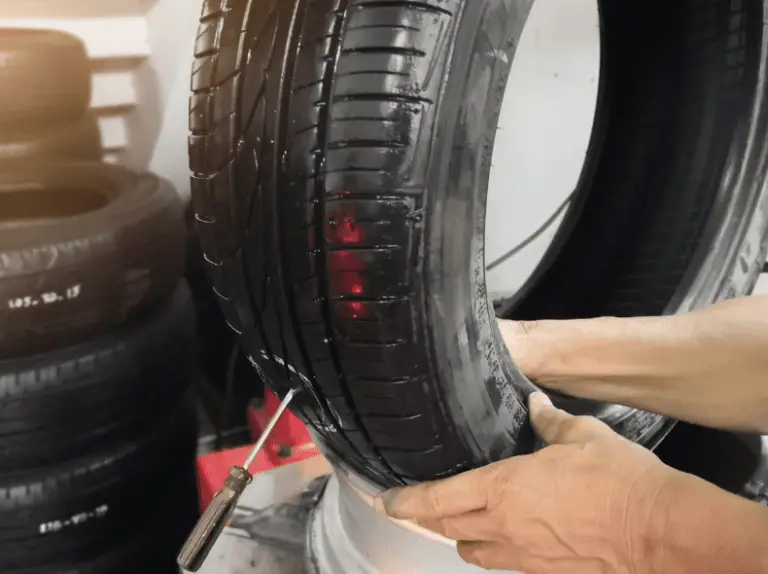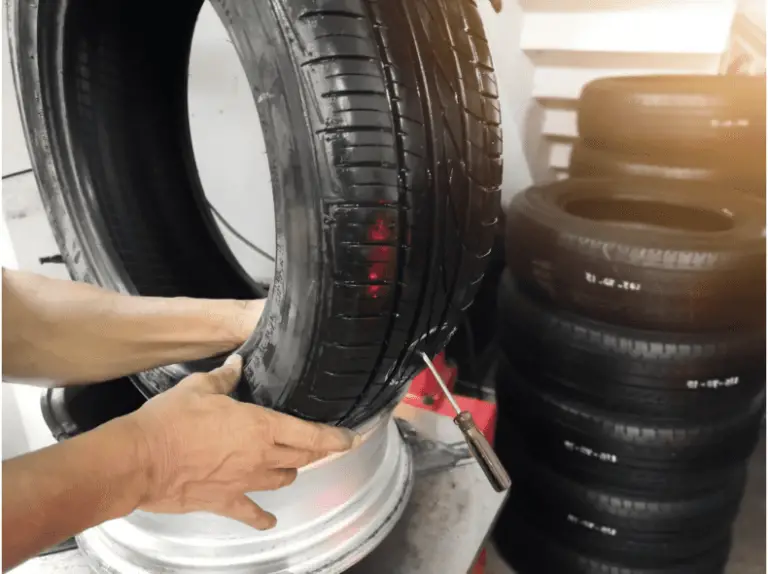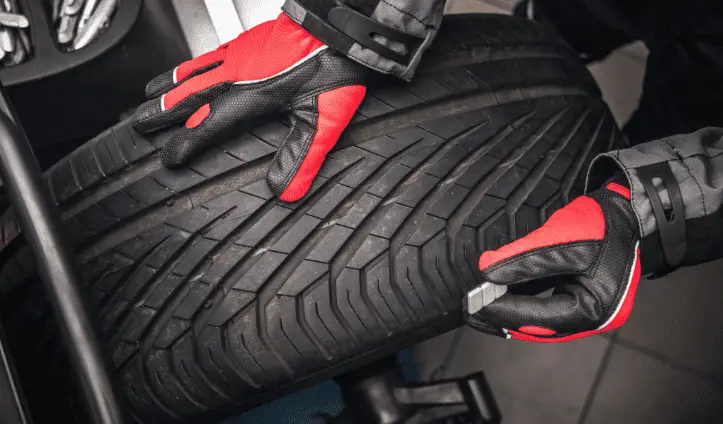Given the expense of buying new tires and the current economic climate, many motorists are looking harder at repairing their existing tires instead of replacing them.
However, it is essential to be aware of the five tire damages that make a tire unrepairable. We will explain this in more detail below.
5 Times When You Can Not Repair A Tire
The Hole Is Too Big
Steel belts reinforce the tire tread area beneath the rubber but can only protect the tire’s structural integrity up to a certain size hole. It cannot be repaired if the puncture is more than 6mm (¼ inch) in diameter.

To check the size of the hole, compare it to the circumference of a nickel (approximately 18mm). If the hole appears to be bigger than one-third of the size of the nickel, it won’t be able to be fixed.
It is important to remember that what is visible from the outside doesn’t always present the full picture.
The hole may be larger on the inside, and this can’t be seen until the tire is removed from the wheel.
Is the Tire Already Repaired?
A tire that has already been repaired can again, in many cases, provided the two repairs are located at least 16 inches apart.
Having the two repairs too close together would put the second repair under a heavier load in the same area as the first, potentially compromising the tire’s structural integrity and driver safety. A blowout would be possible.
Therefore, most tire shops are only willing to patch a tire a second time and rarely a third.
When considering another patch, the tire should be dismounted from the wheel to check for any internal issues with the new hole and other previously unseen damage.
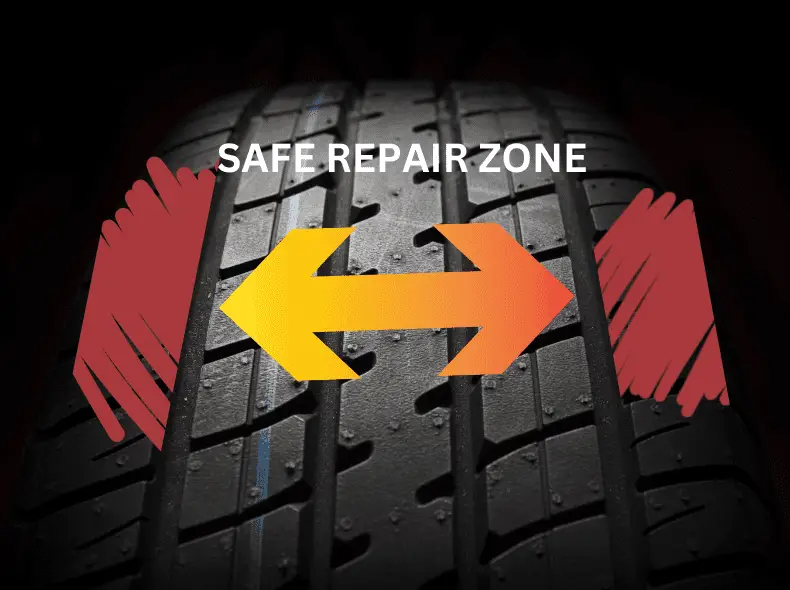
Puncture In the Shoulder Area
The tire’s shoulder is an important part of the design, as it slopes away from the main tread area and down to the sidewall.
Without a shoulder, the tire wouldn’t be aerodynamic, stable, and efficient at dispersing rainwater.
This flexibility allows it to absorb the impact of potholes and rough roads. For this reason, it has no steel belts under the rubber, which would weaken the shoulder’s ability to do this.
It’s impossible to repair a hole in the shoulder, so a new tire will always be needed.
Despite this, it can be tempting to patch the shoulder as it has tread on it and may appear safe in every other way, but it isn’t advised.
If a person is aware of the dangers and still wants to do a sidewall repair, it will have to be done at home, as tire shops will never fix a damaged tire shoulder.
A Puncture on The Sidewall

The sidewall of a tire is located between the tire lip and the shoulder and is much thinner than the tread area. This makes it more vulnerable to punctures from nails thrown up from the road.
As the sidewall – like the shoulder- has no additional strengthening, it relies on air pressure to maintain its rigidity, meaning that any damage to the sidewall may cause a blowout.
Unfortunately, a car shop will not patch a sidewall.
Flat Tire That Has Been Driven On
Although safety should be the priority, driving on a flat tire to get off a busy road can cause irreparable damage. When the tire is flat, the sidewall collapses and rubs against the road, causing scuffing and other damage.
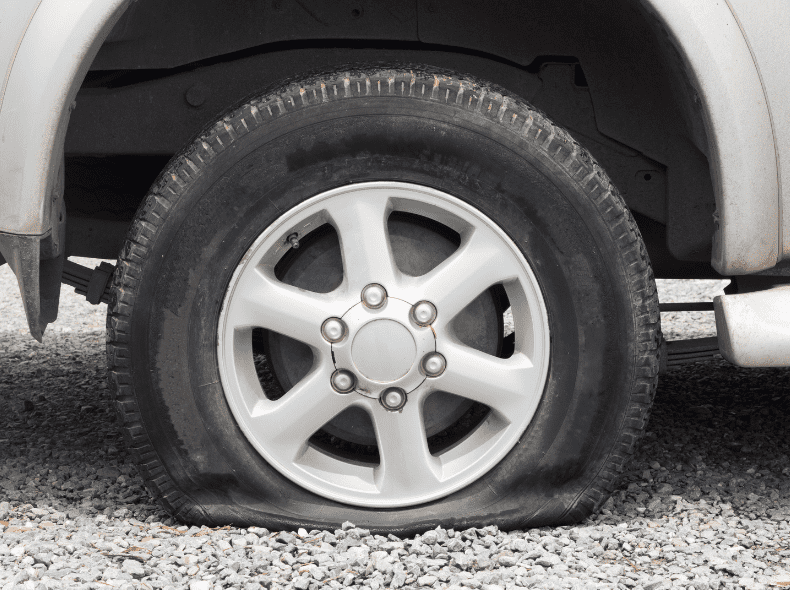
Even if the hole is in a repairable area of the tire’s tread, it’s likely it cannot be driven on again. If you have driven on a flat tire, inspect it for signs of scuffing along the circumference.
The damage may not be visible from the outside but can be seen when the tire is taken off. Be practical and avoid driving on a flat tire whenever possible to ensure it is not damaged beyond repair.



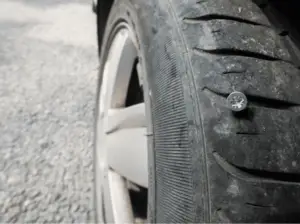

![How Dangerous Is A Broken Tire Belt? [ANSWERED] Radial-Tire-Showing-Belts-and-Ply](https://carzaza.com/wp-content/uploads/2024/02/Radial-Tire-Showing-Belts-and-Ply-300x220.png)
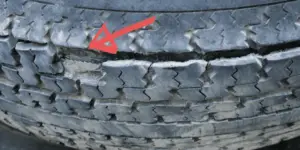
![How To Patch A Big Hole In A Tire [All The Stages] tire-patched](https://carzaza.com/wp-content/uploads/2023/12/tire-patched-300x224.png)
